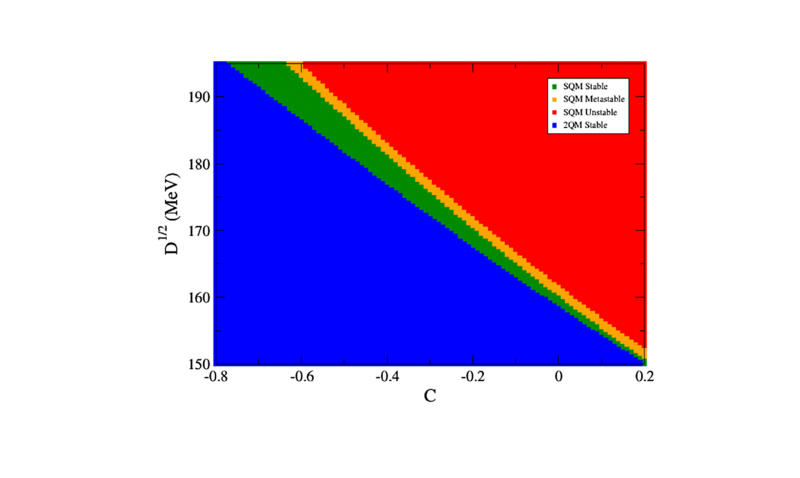Neutron stars are highly massive celestial bodies, which form at the end of the life cycle of massive stars, with a mass greater than that of the Sun, but not so massive as to form black holes.
Neutron stars are characterized by extremely high densities, on the order of 1011 kg/cm3. This equates to a value of 100 million tons per cubic centimeter. A cubic centimeter of osmium, the densest material on Earth, weighs 22 g, which is a negligible amount compared to the 100 million tons in a cubic centimeter of a neutron star!
The neutron star is so dense that it behaves as if it were an immense atomic nucleus made up of many neutrons. Neutrons, in turn, are made up of smaller particles, called quarks.
Because of this similarity to the nuclei of atoms, neutron stars have been studied for decades by nuclear physicists. Despite advances, there are still many open questions about the behavior of matter in these extreme conditions.
Three articles recently published by PG-FIS students, two in the Monthly Notices of the Royal Astronomical Society and one in Physical Review D, focus on the physics of compact neutron matter.
The first paper, "Quark confinement in an equiparticle quark model: Application to stellar matter", by Isabella Marzola, published in Physical Review D, explores new models of quark confinement and applies it to predict the relationship between the mass and radius of stars of neutrons. The paper shows that the results are consistent with recent observations.
The second article, "Recent astrophysical observations reproduced by a short-range correlated van der Waals-type model?, by Éverson Rodrigues, published in the journal Monthly Notices of the Royal Astronomical Society, uses van der Waals-type models to describe macroscopic behavior of neutron stars and explain observational data.
The third article, "Bayesian analysis of a relativistic hadronic model constrained by recent astrophysical observations", by Bruno Moura Soares, published in the journal Monthly Notices of the Royal Astronomical Society, uses Bayesian statistics applied to observational data with the aim of establishing new restrictions on possible models of the equation of state of matter in neutron stars.
These works were developed under the guidance of professors Odilon Lourenço, Mariana Dutra and Cézar Lenzi, all accredited at PG-FIS and working in the area of Nuclear Physics.

